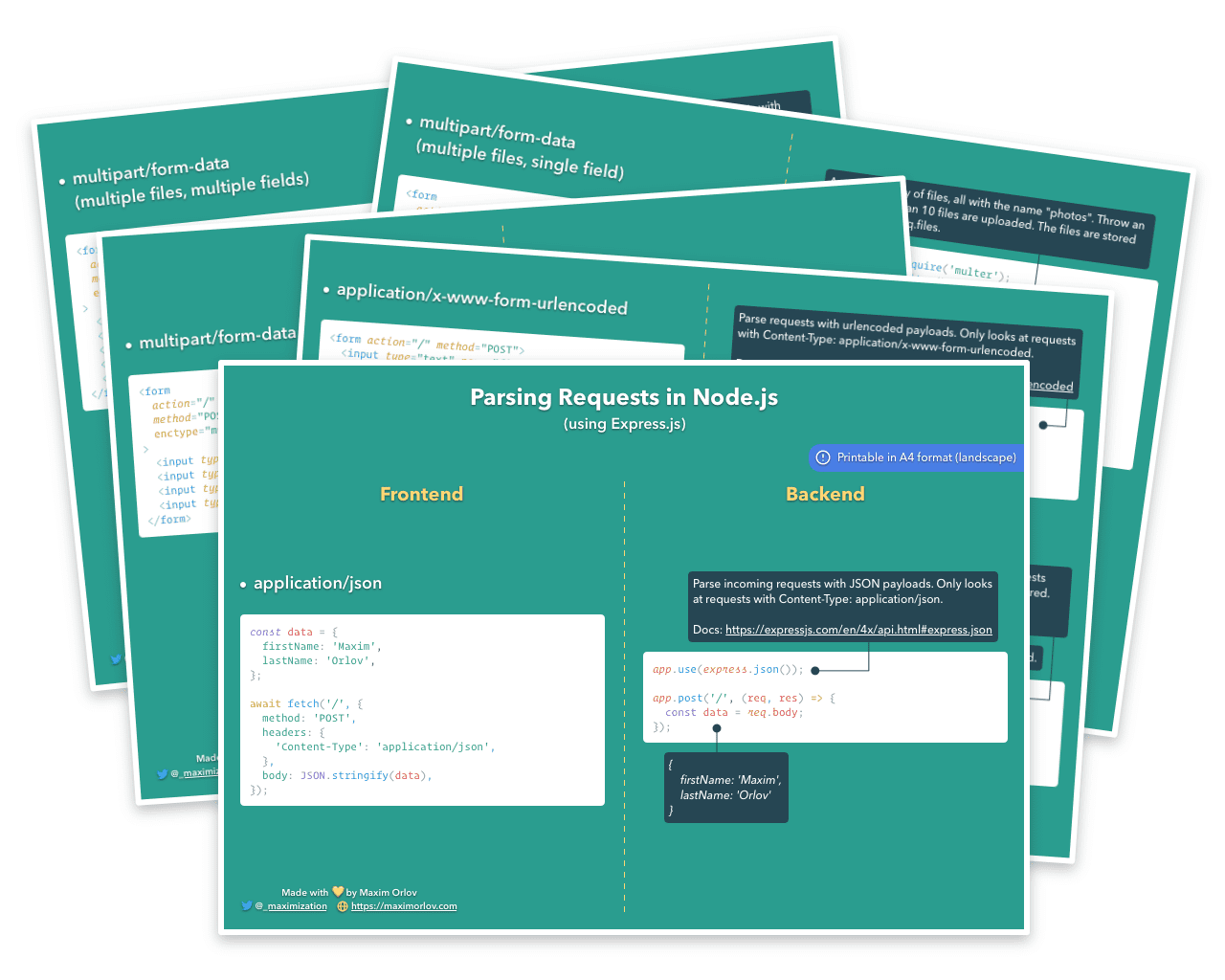Request Parsing in Node.js Guide
Send any type of data from the browser to your Node.js server with confidence Download Now
Parsing requests in Node.js is a hit or miss
Different Content-Types and body formats, it's hard to remember which is which. application/x-www-form-urlencoded or multipart/form-data? How do you even tell them apart?!
The code you wrote is working only half of the time, and you have no idea why. Express is parsing some requests, but ignoring others.
Frontend data isn't coming through and req.body comes up as undefined. Something surely is missing, but what?
What if you knew the shape of the incoming data like the back of your hand?
Write a few lines of code, get your data in the right format, and pass it further down the app. How great is that?
You could be an expert at handling incoming requests in Node.js.
Imagine writing code that works on the first run. No more guessing.
You can ditch the console.logs because you know exactly where your data will be and how it will look like.
A guide for parsing requests in Node.js
All you need is a well-crafted reference guide that shows you all the information you need at a quick glance.

With this FREE reference guide, you will be able to:
- Parse each Content-Type correctly according to latest best practices
-
Know the difference between
application/json,application/x-www-form-urlencodedandmultipart/form-data -
Visualise how frontend data maps to
req.bodyon the server side - Reference the fields provided by multer, and what they mean
Whether it's physically sitting on your desk, hanging on your wall, or digitally stored just a few clicks away — this guide will always be there for you when you need it the most.
You'll also get tips on building scalable Node.js applications about twice a month. I respect your email privacy. Unsubscribe any time.